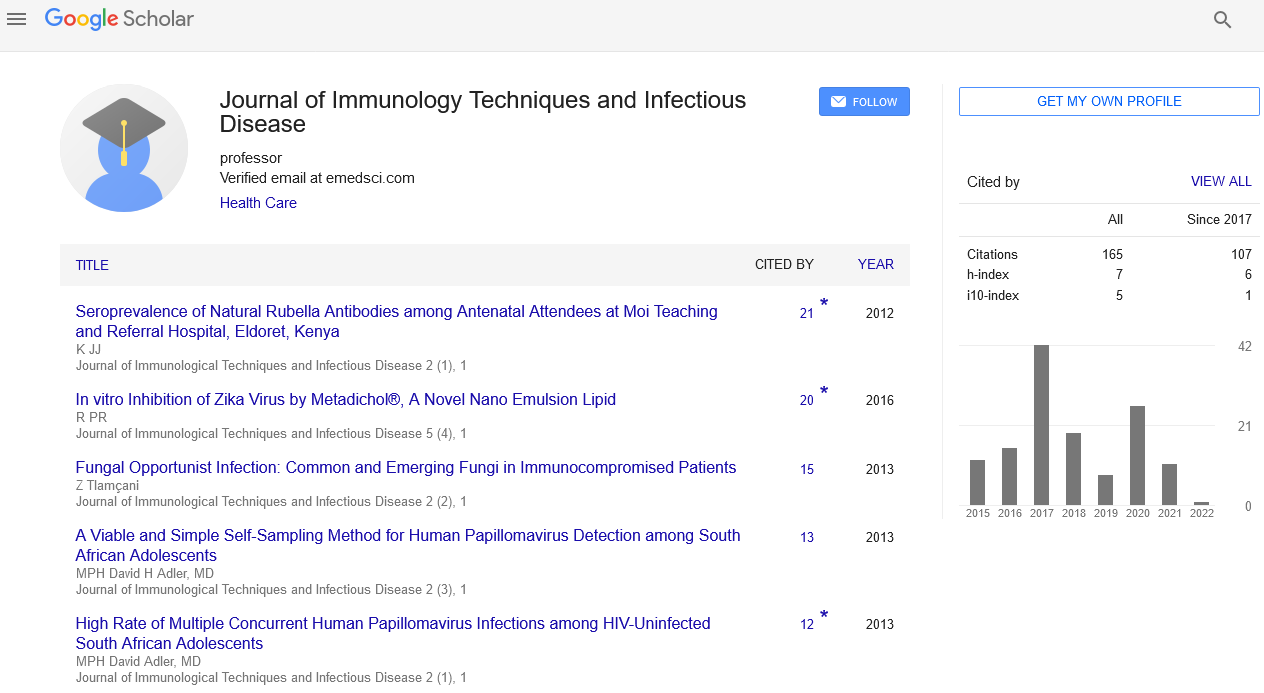Core genome MLST on carbapenemase-producing Escherichia coli from Oman: Evidence of polyclonal dissemination of NDM and OXA-48
Hissa Al Farsi
Karolinska Institutet, Sweden
: J Immunol Tech Infect Dis
Abstract
Carbapenemase-producing Enterobacteriaceae (CPE) currently comprise a major threat to modern antimicrobial treatment, since such strains are resistant to almost all drug classes. As a step to control the spread of CPE in Oman, we aimed to determine population structure of carbapenemase-producing E. coli. Whole genome sequencing (WGS) was performed for thirty-five E. coli isolates. A total of 14 (40%) isolates were NDM-type producers and 8 (23%) isolates were OXA-48 type producers. In the OXA-48 group 5 isolates carried blaOXA-48 gene and 3 harbored blaOXA-181. Genes of the blaCTX-M-15 type were detected in 25 (71%) E. coli isolates. The blaCTX-M-15 type ESBL gene was co-produced with NDM in 12 isolates and with OXA-48 type in 6 isolates. Of all isolates that tested negative for carbapenemases (n=13), 62% produced CTX-M-15-type ESBL. Classical MLST revealed 21 STs belonging to 10 different clonal complex (CC) and three unrecognized STs, seven of which comprised two or more strains, representing (54%) of the population. Of these ST38 was the most prevalent with 4 isolates (11.4%). eBURST recognized CC10 for 7 isolates in three unique STs, (ST167, ST617, ST1702) with ST167 as predicted founder. When CC10 was examined with core genome (cgMLST) two different clusters with at least 780 allelic differences were found. Isolates within each clusters differed at most by 190 alleles. Two isolates were ST101 and produced NDM plus CTX-M-15. The two isolates differed in only five alleles, suggesting they comprise a small outbreak. Overall cgMLST data suggested that the dissemination is polyclonal, at the subclone level.
 Spanish
Spanish  Chinese
Chinese  Russian
Russian  German
German  French
French  Japanese
Japanese  Portuguese
Portuguese  Hindi
Hindi 
